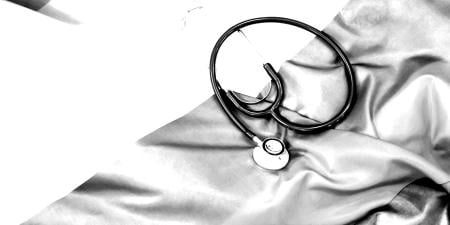Despite their tightly packed curricula, medical schools throughout the U.S. have recently begun to make room for a long-overlooked set of health concerns: the needs of lesbian, gay, bisexual, and transgender (LGBT) patients.
This development reflects several notable trends. First, LGBT lives have become far more visible in society and, thus, in health care. Most physicians and medical students now realize that, regardless of their specialty or region, they will encounter patients who are gay, lesbian, bisexual, and transgender. Recognizing this, they want to be knowledgeable about and sensitive to this group’s needs.
Second, the challenges faced by LGBT people in accessing health care are receiving much wider recognition. Many, for example, delay or avoid medical treatment for fear of encountering bias in health care settings. Others seek treatment, but are turned away either overtly or more subtly, despite laws in a number of states prohibiting discrimination on the basis of sexual orientation and gender identity [1]. Still others receive suboptimal treatment in medical encounters with practitioners who feel uncomfortable, insufficiently knowledgeable, or even biased toward LGBT patients. Obtaining health insurance may also be difficult: many employers offer health coverage for employees’ spouses, but not for their same-sex partners (59 percent of the Fortune 500 offer domestic partner health benefits, but only 40% of the Fortune 1000 do so, and most smaller employers do not) [2], and most employee health policies (93 percent of the Fortune 500’s and 97 percent of the Fortune 1000’s) refuse to cover surgery and hormone treatment for transgender patients [3], despite a 2008 AMA resolution calling for such coverage [4].
Third, a growing body of research has documented the disparities in health status between LGBT and “straight” patients. Some of these differences are relatively well-known: greater prevalence of STIs and substance use among men who have sex with men (MSM) and transgender individuals, and higher rates of depression, anxiety, smoking, and alcohol use among LGBT people as a group. Disparities like these, which have significant consequences, have long been attributed to stigma and stress. Other disparities, however, are more mysterious in origin, and require more research. For example, lesbian, gay, and bisexual respondents in the 2007 California Health Interview Survey (CHIS) were 50 percent more likely to report having been diagnosed with cancer in their lifetime. Data collection in these and other areas of interest is not yet robust, however, because most health research does not yet ask participants to identify their sexual orientation [5].
These and other pressing LGBT health issues are receiving increasing attention. The Institute of Medicine has convened a Committee on LGBT Health Research Gaps and Opportunities [6], the American College of Physicians has published a comprehensive LGBT health text [7], the Joint Commission has issued a standard requiring hospitals to prohibit sexual orientation- and gender identity-based discrimination at their facilities [8], and the AMA has launched a number of related efforts [9], including a report on LGBT health and an ongoing survey of member attitudes toward LGBT patients and colleagues.
These wider developments have been matched by heightened attention to these concerns in medical education, partly sparked by students and faculty who have chosen to “come out” and advocate for LGBT health needs, despite possible negative consequences. They have been joined by large numbers of “ally” classmates and colleagues who have become concerned about the needs of LGBT patients. Recent efforts to highlight the health needs of other groups who have historically faced discrimination have also helped promote awareness.
In response to these developments, the Association of American Medical Colleges (AAMC) disseminated “Recommendations Regarding Institutional Programs and Educational Activities to Address the Needs of GLBT Students and Patients” to medical school deans in the U.S. and Canada in 2007 [10]. A number of these recommendations focused on institutional climate, asking schools to create “a safe learning environment” for LGBT medical students and faculty via explicit nondiscrimination policies, inclusive admissions materials, and more. The curriculum recommendations urged medical schools to “prepare students to respond effectively, compassionately, and professionally” to LGBT patients, providing them “excellent, comprehensive heath care.” The curriculum recommendations also called for “training in communication skills with patients and colleagues regarding [LGBT] issues,” faculty and resident development programs addressing these concerns, and “comprehensive content addressing specific health care needs of LGBT patients” [10].
Medical schools have responded in a variety of ways to these internal and external requests. Prodded by a survey recently sent to schools nationwide by the student-led Stanford LGBT Medical Education Research Group, a number of institutions scanned the content in their curriculum. The final results of the Stanford survey are not yet available, but the great majority of schools reported that their curriculum contains some content related to LGBT issues. This content is often limited, however, to units covering STIs (particularly HIV), mental health, and sexual history-taking.
LGBT health experts point out that being mentioned in these curriculum areas, while important, does not cover the full range of patient needs—and, poorly handled, may even reinforce stereotypes or engender confusion. For example, an interviewer may view a transgender patient as mentally unstable simply because she is transgender, or may focus too heavily on HIV testing for an HIV-negative male patient who identifies himself as gay, regardless of his actual sexual behavior or presenting symptom. And students newly taught to ask patients “Are you having sex with men, women, or both?” may not have been trained how to respond when a patient answers, “Both.”
These pitfalls, together with the breadth of LGBT health concerns, point to the importance of well-conceived, wide-spectrum curriculum offerings in this emerging area. To meet this need, many schools are studying the approach of the School of Medicine at the University of California in San Francisco (UCSF). Located in the U.S. city estimated to have the highest LGBT population, UCSF has been a pioneer in LGBT health—and as founding director of UCSF’s LGBT Resource Center, the only such office in a health education or health care setting in the nation, I have had the opportunity to design and evaluate many of UCSF’s curricula on these topics.
A critical first step in was to create map of existing curricular offerings. Rising second-year students, guided by the UCSF LGBT Center, examined each preclinical curriculum unit, noting whether it included any LGBT-related content (and, if so, what). The resulting grid, complete with faculty contact information, was then carefully reviewed to identify each area in which LGBT content might be added, augmented, or revised. Identified areas included not only infectious disease, mental health, and sexual history-taking but also cancer, endocrinology, cardiovascular disease, neurological development, addiction, tobacco use, hypertension, nutrition, geriatrics, pediatric and adolescent medicine, social determinants of health, ethics, patient communications, and a host of other topics.
UCSF then adopted a multi-level strategy for infusing LGBT-related content into the curriculum. The most notable infusion was a 3-hour session dedicated to these issues in the school’s second-year Life Cycle course. This unit includes readings, a lecture, an LGBT patient panel, and mandatory small-group discussions of clinical vignettes, facilitated by “out” UCSF physician faculty. The block is among the most highly rated at the school, with students reporting that the information provided is both compelling and useful.
UCSF also recognized the need to infuse this content into other areas. For example, a patient experiencing abdominal pain in an early first-year case turns out to be a lesbian reluctant to be tested for pregnancy and anxious that her partner have full access to her medical information, a scenario that raises general ethical and communication questions while also increasing students’ sensitivity to LGBT concerns. Likewise, the “standardized patient” who visits some first-year students’ small groups with a complaint of non-specific pelvic pain is a transgender woman, although her transgender status turns out not to be related to her complaint.
The students who developed the curriculum map then systematically contacted the faculty responsible for units in which inclusion of LGBT-related information seemed appropriate. Offering data relevant to the faculty members’ teaching areas, the students asked, for example, whether they would be willing to include information about the particular health risks, disparities, and inequities faced by LGBT youth and adults. The great majority of faculty were receptive to incorporating the new content.
Like many schools, UCSF already made mention of LGBT concerns in teaching sexual history-taking, the point in the medical interview when many patients “come out” (although increasing numbers now self-identify prior to the interview, thanks to new, LGBT-inclusive patient registration forms). In this area, UCSF’s curriculum initiative focused on ensuring that students respond appropriately when patients come out in the course of a sexual history, use unfamiliar terms, ask questions about specific practices, or have concerns about confidentiality. Students report to me and other instructors that the sensitivity training they receive—via written materials, role plays, videos, and facilitated small-group discussion—prepares them for difficult conversations of all kinds.
It is more challenging, of course, to make systematic changes in the clinical years of medical education. It is often in these years, however, that many students see the real-world need for LGBT-related training. To respond to this need, UCSF schedules talks by attending physicians or visiting faculty on relevant aspects of particular rotations, and uses sessions between clerkships to debrief difficult or troubling interactions with LGBT patients that students may have experienced or witnessed.
As LGBT health concerns begin to receive more attention in medical schools’ formal curricula, it should be noted that student groups at many institutions are organizing co-curricular programs designed to teach their colleagues about LGBT needs—efforts supported by AMSA’s Gender and Sexuality Committee. While generally seen as stopgap or interim offerings, these student-driven co-curricular programs play a vital role in heightening awareness of the needs of these populations and speeding up formal curriculum change.
When organized efforts to infuse these concerns into medical education began some 15 years ago, LGBT patients declared, “There’s more to us than AIDS!” In 2010, a growing number of medical schools agree—and have expanded their curricula to embrace the full spectrum of LGBT health concerns.
References
-
Human Rights Campaign Foundation. Equality from state to state 2009. http://www.hrc.org/about_us/14026.htm. Accessed July 20, 2010.
-
Human Rights Campaign Foundation. Workplace benefits. http://www.hrc.org/issues/workplace/benefits.asp. Accessed July 20, 2010.
-
Human Rights Campaign Foundation. Transgender-inclusive benefits for employees and dependents. http://www.hrc.org/issues/workplace/benefits/transgender_inclusive_benefits.htm. Accessed July 20, 2010.
-
American Medical Association. Resolution H-185.950 Removing financial barriers to care for transgender patients. http://www.ama-assn.org/ama/pub/about-ama/our-people/member-groups-sections/glbt-advisory-committee/ama-policy-regarding-sexual-orientation.shtml. Accessed July 20, 2010.
-
Drexel University Program for Lesbian, Gay, Bisexual and Transgender Health. GayData.org Web site. http://www.gaydata.org. Accessed July 20, 2010.
-
Institute of Medicine. Lesbian, gay, bisexual and transgender health issues and research gaps and opportunities. http://www.iom.edu/Activities/SelectPops/LGBTHealthIssues.aspx. Accessed July 20, 2010.
-
Makadon H, Mayer K, Potter J, Goldhammer H. The Fenway Guide to Lesbian, Gay, Bisexual and Transgender Health. Philadelphia, PA: American College of Physicians; 2008.
- Joint Commission on Accreditation of Healthcare Organizations. New and revised hospital EPs to improve patient-provider communication. Joint Commission Perspect. 2010;30(1):5-6.
-
American Medical Association. GLBT Advisory Committee. http://www.ama-assn.org/ama/pub/about-ama/our-people/member-groups-sections/glbt-advisory-committee.shtml. Accessed July 21, 2010.
-
Association of American Medical Colleges. Informational guide to effective practices for gay, lesbian, bisexual, and transgender (GLBT) students and patients. http://www.aamc.org/members/gsa/glbt.htm. Accessed July 20, 2010.



